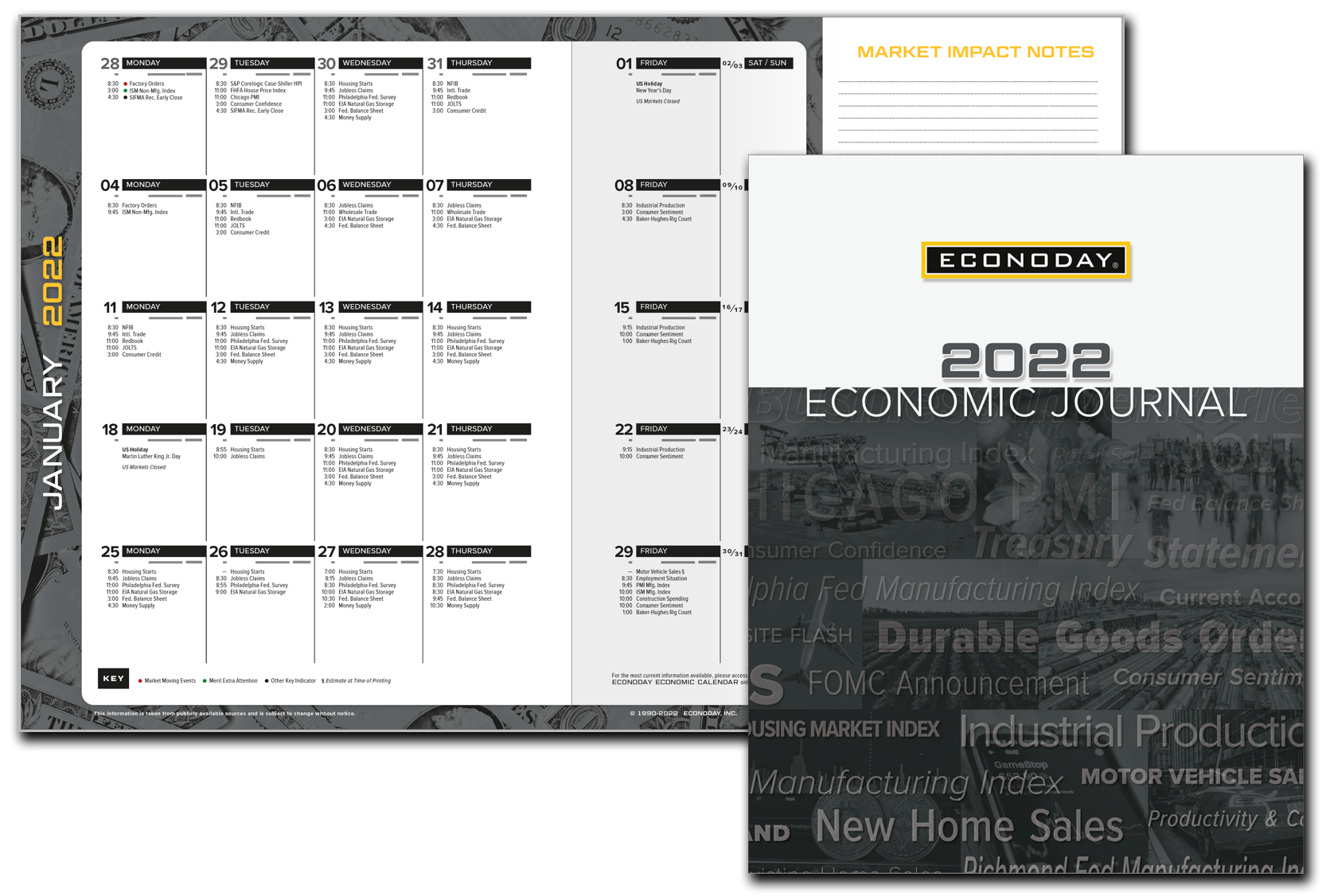Is accelerated tapering in store for the January FOMC?
January 19, 2022
Theresa Sheehan, Econoday economist
Could 2022 start off with an abrupt end to asset purchases? The Fed began to taper its purchases back in November, down from $120 billion per month (a pace set early in the pandemic) to $105 billion in November and $90 billion in December. These $15 billion tapering increments were then doubled to $30 billion in January to reduce purchases to $60 billion per month, a pace that, if unchanged, would wind up tapering by the end of March. Based on this scheduling together with the Fed’s guidance that rate hikes would only follow the end of tapering, the first possible rate hike would presumably be no sooner than the FOMC meeting in early May. But what if the Fed, at its coming January 25-26 meeting, wants to clear the way for a hike at the March 15-16 meeting? They could do this by cutting purchases in one giant $60 billion increment or, which would be less disruptive to the markets, by a $45 billion and $15 billion two-month sequence.
One of the consistent themes in recent months is that asset purchases need to be concluded before rate hikes begin. December’s FOMC accelerated the pace of reductions for December and January and left open the size of the reductions in future months. Data on price inflation and the potential for wage inflation creeping in have resulted in decidedly more hawkish rhetoric of late. It appears that the three potential rate hikes forecast in December’s Summary of Economic Projections (SEP) have been reconsidered in short order and upped perhaps to as many as four or even five. The January FOMC meeting won’t have an official update to the SEP, but it’s clear that forecasts are evolving quickly.
It looks like a majority of the regional presidents who have a vote in 2022 could support an earlier end to asset purchases. Along with New York’s John Williams, this year’s voters will rotate in Cleveland’s Loretta Mester, St. Louis’ James Bullard, Kansas City’s Esther George, and voting as an alternate for Boston is Philadelphia’s Patrick Harker. Williams has been noncommittal about the timing of rate hikes. Mester, Bullard, George, and Harker have all indicated a March rate hike is on the table.
Among the four governors’ votes, even those seen as moderate or dovish on inflation are sounding the alarm that monetary policy needs to cool inflation. It’s probable that Governor Christopher Waller could support a more abrupt end to asset purchases and sooner liftoff in interest rates. Governor Michelle Bowman hasn’t spoken publicly about policy recently, but it would be a surprise if she did not vote with the majority. Chair Jerome Powell and Governor Lael Brainard both appeared before the Senate Banking Committee this past week in separate hearings – Powel in his confirmation hearing for a second term as Chair and Brainard to become Vice Chair. Both were adamant that the Fed would use its tools to rein in inflation and both appeared to have a greater sense of urgency about removing stimulus. Brainard did say that that asset purchases needed to end before rate hikes began.
Fed policymakers will always caution that monetary policy is never on a preset course and that no decision is made before the FOMC participants sit down for their deliberations. However, expectations for the next meeting for a more hawkish turn in monetary policy are well-founded and unlikely to be disappointed.
Now that the communications blackout period around the FOMC meeting on the 25th and 26th is in effect (midnight Saturday, January 16 through midnight Thursday, January 27), there won’t be any fresh comments to give a hint about the direction the FOMC will go when it meets. Inflation data have likely met policymakers’ metric for a need to start raising rates as have data for the labor market with maximum employment near if not already there. There are no economic reports scheduled before the meeting that should alter the policy outlook.
MARKET-MOVING EVENTS FOR AN ENTIRE YEAR
Strategic investing and analysis are a lot easier when you can identify patterns and see how economic events and announcements correlate with specific market movements. The Econoday Journal provides a convenient and easy way to follow important economic events every day, every month, throughout the year.
- Enhanced new large format
- Spiral-Bound
- Monthly Monitor Calendar
- Space to write personal Market Impact Notes
- PLUS Our comprehensive Resource Center, featuring all the great information & insights you’ve come to expect from Econoday

